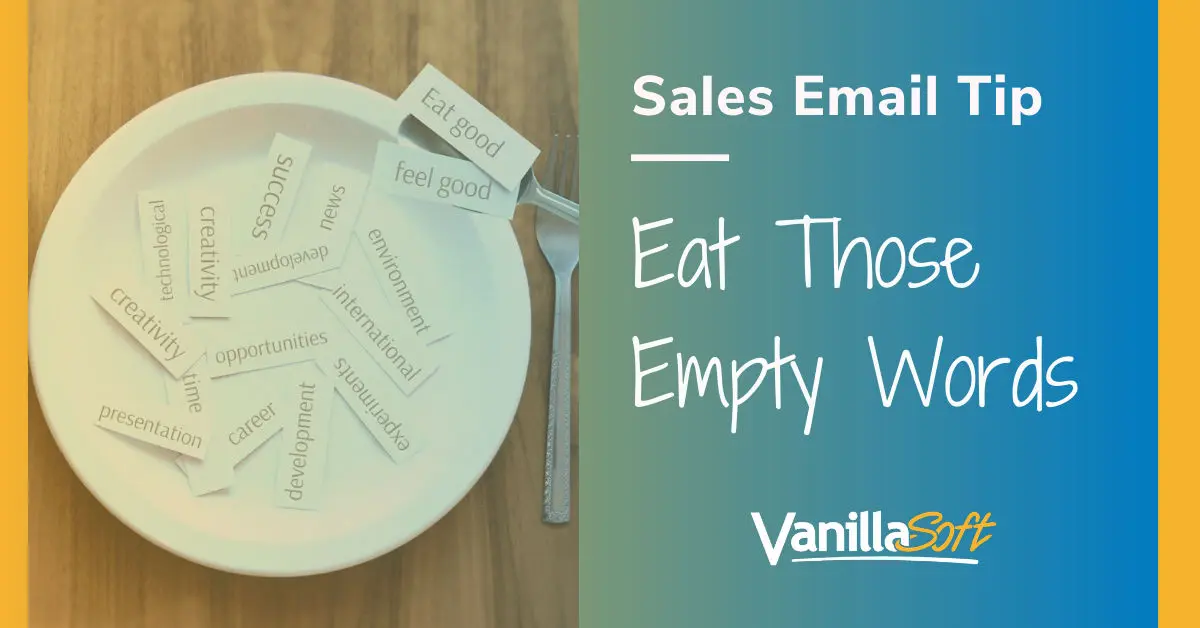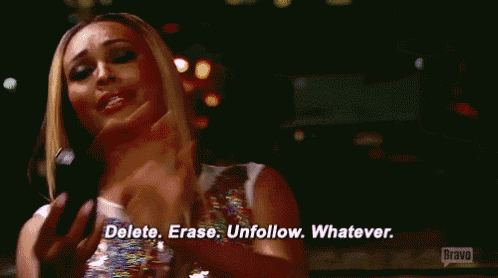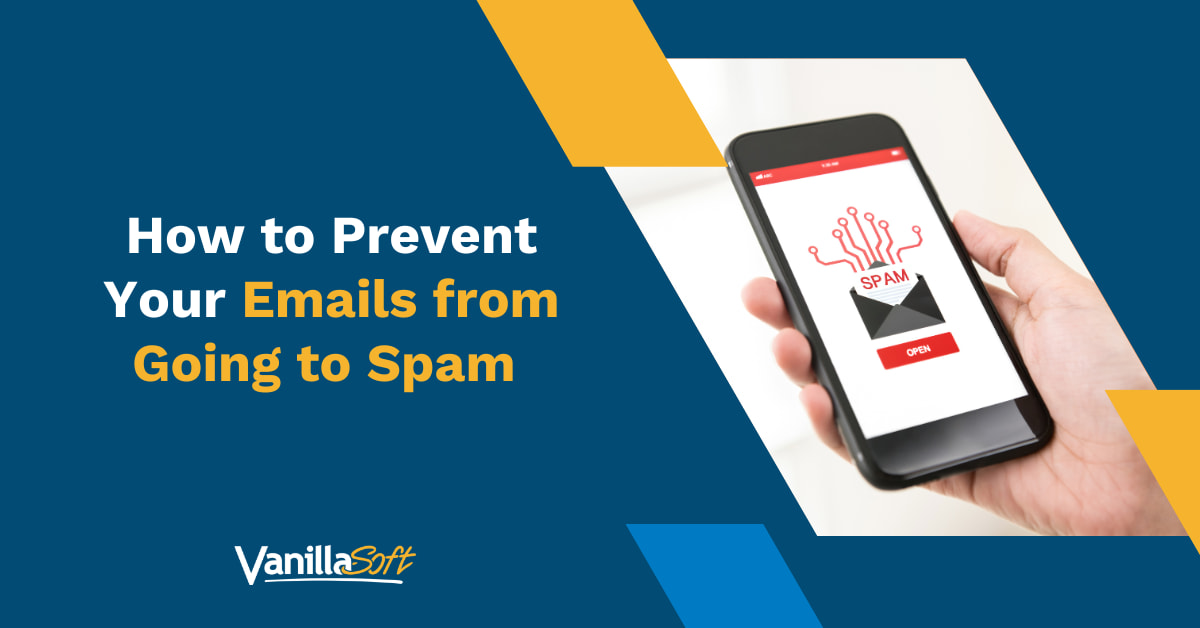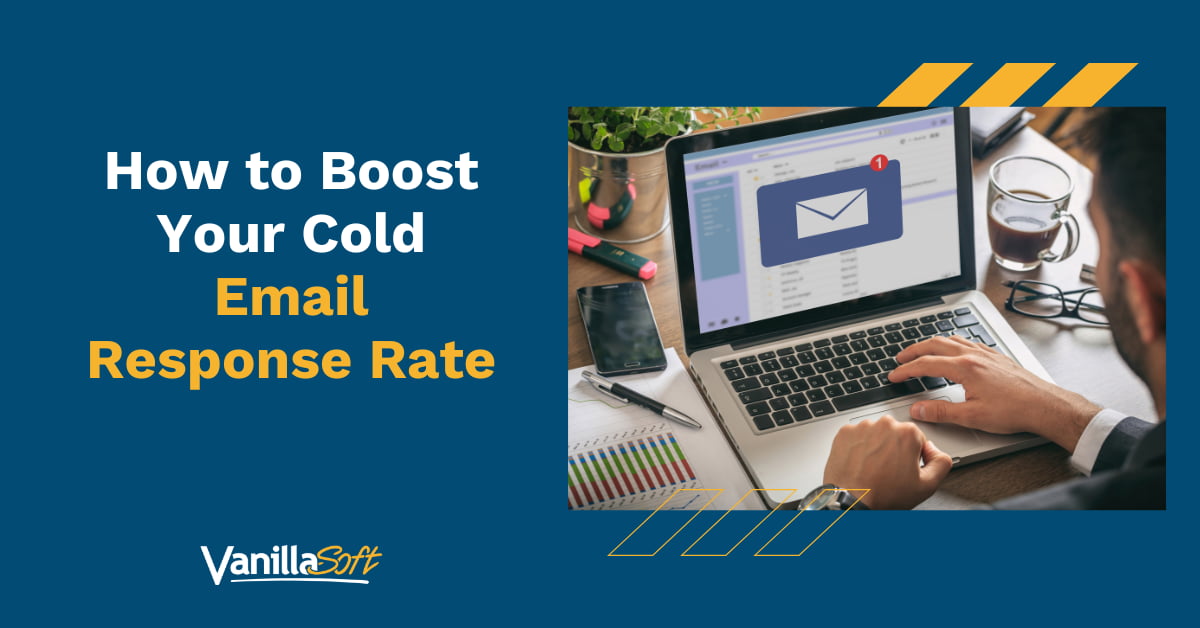
Your emails don’t need them
Everyone (we hope) knows that a sales email does not need to be an essay on the sender, the product, or the brand. Yet, emails from salespeople tend to be long and contain too many empty words. They fill the page but seldom do anything else. Just like how fast food fills your belly but rarely nourishes…
We have talked quite a bit about “shitty emails” and shared steps on how to build reliable email templates for various occasions. Yet, email exchanges remain a puzzle to many sales reps, probably because you do not see the recipient’s reaction immediately (if at all). Possibly, this inability to see the recipient’s reaction is why terrible emails have been allowed to continue for so long.
Keeping the sentences crisp is only one of the not-so-secret codes to effectively writing the email. However, it is a good start – the kind that does justice to the adage ‘well-begun is half done’.
What empty words do to your prospect
Empty words make prospects “skim and skip”
Not everyone you’re emailing knows the products and features that you talk about every single day. Remove technical jargon from your email copy and avoid detailed product descriptions in cold emails as these are the biggest causes of “skim and skip.” Save the details for face-to-face meetings.

Empty words make reading the email seem like a waste of time
Prospects don’t care who you are. Who you are doesn’t matter to them at all until what you are offering piques their interest and addresses their pain points.
Yeah, ouch!
And they are not going to wait until the 4th line of the 3rd paragraph to find out what’s in it for them either.
Empty words dilute the impact you seek
Then there is the deadweight of introductions like ‘I hope you’re well. My name is XXX and I am from…’ You don’t really hope so, and even the prospect knows it. Ditch the dead weight.
How to eliminate empty words from emails
Empty words form empty sentences. Every email needs direction and a promise to make the reader sit up and take notice. Here are some fail-safe ways to keep your emails an empty-word-free zone.
What can you learn from this email?
——-
Hello,
Warm Greetings!
My name is ABC and I am writing on behalf of XYZ company. We are interested in entering a partnership with your company. We offer great customer experience and work with the best of the best companies, who are looking for that extra support to achieve and exceed their goals. Your organization deserves excellence and we can promise you that. Are you ready for someone to help you create smart marketing strategies that gets you more followers?
We have a diverse clientele and can adapt to your organizational goals easily. Let us connect for a quick chat and we can walk you through our products and services.
Have a nice day.
Regards,
ABC
——-
Does this email appeal to you enough to look up this person on LinkedIn? What do you think the sender was trying to convey? They work with good companies. That’s good. They offer customer experience. Erm, what kind of customer experience? You have no clue.
There is no mention of what this potential partnership could mean for the recipient’s company. It is not clear whether the sender even understands the recipient’s customer base. This is an extremely empty and dead-weight email at best!
Hunt for empty words and remove them forcefully

This will be uncomfortable at first. Removing words from an email you took so long to draft in the first place feels wrong! However, we don’t want to make the reader zone out, and one unwanted phrase here or an extra word there is all it takes.
For instance, ‘a really amazing book’ and ‘an amazing book’ means the same. Why say ‘5 different prospects’ when ‘5 prospects’ work better? Scan your email for redundancies like ‘actually,’ ‘just’, ‘very,’ and so on. Aside from making the email look needlessly big, they make your email look less confident.
Use clichés carefully
Doing away with clichés is not practical. There is a reason certain terms and words have become clichés; they worked. Phrases like ‘one-stop-shop’ and ‘user-friendly,’ among others are overused for this reason. They can still triumph over the contempt caused by overuse if you use it only when necessary. It’s all about keeping your email strategies fresh and current.
Treat white space like silver space
‘White space is silver space’ is one of the guiding principles of print journalism. Printing is expensive, you see. When digital media took over, the cost of space ceased to be a concern. However, it made people forget another important aspect – the reader’s attention span.
A VP of Marketing or a CEO receives hundreds of emails, and the average reading time is usually 13.4 seconds as per the Litmus Email Analytics. What do you want the prospect to focus on and retain in this precious 13.4 secs? In other words, get to the point as you have less ‘space’ than you know!
Take time to read your sales email aloud before you send
Sometimes, there could be a world of difference between what we intend to express and what we actually express. The email medium is so comfortable that you often press ‘Send’ before reviewing. It is not easy to visualize how your email appears to the reader and how he or she might interpret every word, their meaning, or lack thereof. So, before you send, read it aloud. The results may surprise you.
Are You Making the Most of Every Word in Your Sales Email Copywriting?
In pursuit of making every word count, we often associate brevity with authority and leadership. That doesn’t mean you should write with a curtness devoid of courtesy. You do not want your email to come across as bland, cold and impassive. Pack in some zeal while sticking to an economical wordcount. The key here is that you become more aware of your choice of words and phrases, and how the final email reads.
Writing more engaging sales emails isn’t hard and is a skill worth perfecting.



